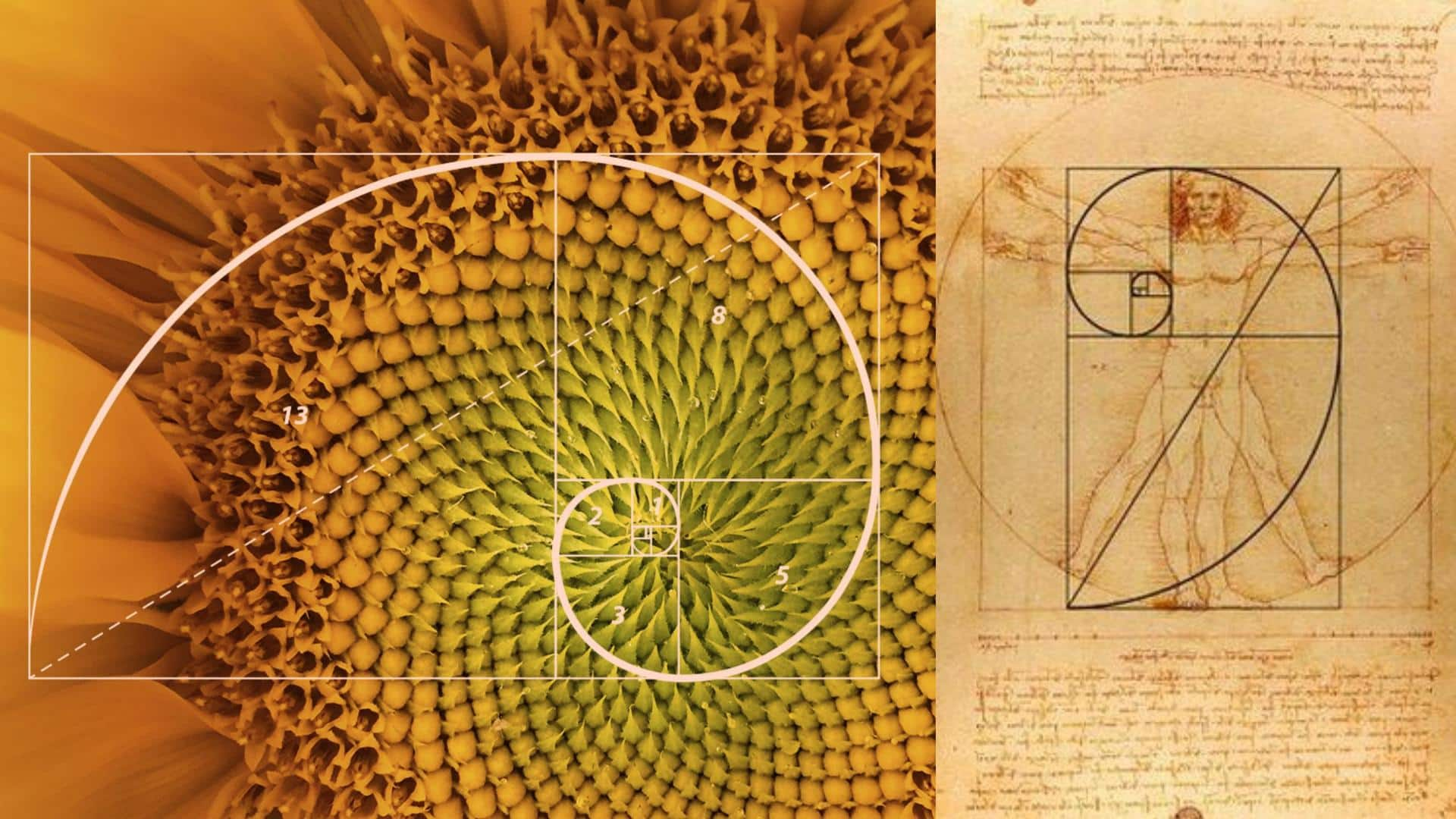
International Mathematics Day: Exploring Fibonacci sequence in nature and art
What's the story
The Fibonacci sequence and the golden ratio are fascinating mathematical concepts that have been studied and admired for centuries. On the International Day of Mathematics, it is a great opportunity to appreciate the beauty and significance of these concepts. These concepts are not only mathematically significant but also visually appealing and widely occur in nature and have been used in human creations for ages.
Fibonacci
What is the Fibonacci sequence?
The Fibonacci sequence is a famous sequence of numbers that begins with 0 and 1, and each subsequent number is the sum of the previous two. So, the sequence goes 0, 1, 1, 2, 3, 5, 8, 13, 21, 34, 55, 89, 144, and so on. This sequence is named after Leonardo Fibonacci, who introduced it to the Western world in 1202.
Definition
What is the golden ratio?
The golden ratio is a ratio between two numbers that equals approximately 1.618. If you take two consecutive numbers in the Fibonacci sequence and divide the larger number by the smaller number, you will get a value that is close to the golden ratio.
Natural world
In Nature
One of the most famous examples of the Fibonacci sequence in nature is the spiral arrangement of leaves on a stem or the arrangement of seeds in a sunflower head. These patterns, called phyllotaxis, follow the Fibonacci sequence. Interestingly, the spirals in sunflower heads, for example, typically follow a pattern of 34 clockwise spirals and 55 counterclockwise spirals.
Human body
In Human body
The golden ratio derived from the Fibonacci sequence also appears in the proportions of the human body. The ratio between the length of the forearm and the hand is approximately 1.618. The shape of the human face, with the distance between the eyes and the mouth, and the distance between the mouth and the chin, also follows this ratio.
Creations
In art, architecture, and design
The sequence also has applications in art, architecture, and design, where it is used to create aesthetically pleasing compositions. Its presence in nature has made it a popular design tool. Many artists have used the Fibonacci sequence to create compositions with balanced proportions and pleasing aesthetics, including Leonardo da Vinci, who used the golden ratio in his famous painting, the Mona Lisa.
Information
The golden ratio in the Taj Mahal
The ratio of the length to the width of the Taj Mahal's main building is approximately 1.6, which is close to the golden ratio. The building's height and the height of the central dome also follow the principles of the golden ratio.
Information
The golden ratio in 'Mona Lisa'
The dimensions of the famous 'Mona Lisa' painting by Leonardo Da Vinci adheres to the golden ratio. If a rectangle is drawn around the face of the 'Mona Lisa', the ratio of the height to width of that rectangle is equal to the golden ratio.
Conclusion
The beauty of the Fibonacci sequence
Starting with just two numbers, 0 and 1, the sequence builds on itself by adding the previous two numbers together to create the next number in the sequence. From the natural world to human creations, the sequence appears in many forms and plays a role in the harmonious balance and proportion of the things we see and experience around us